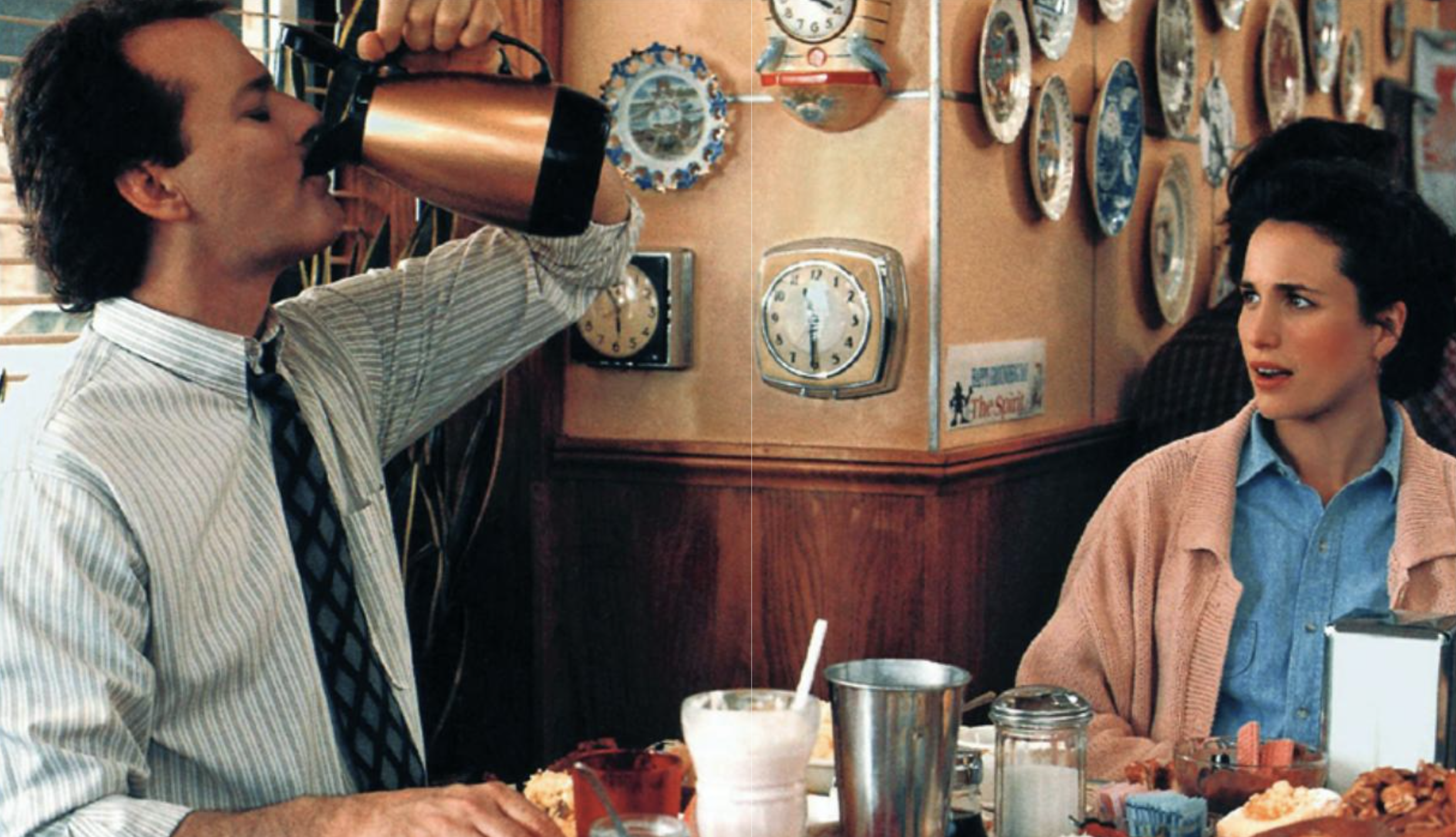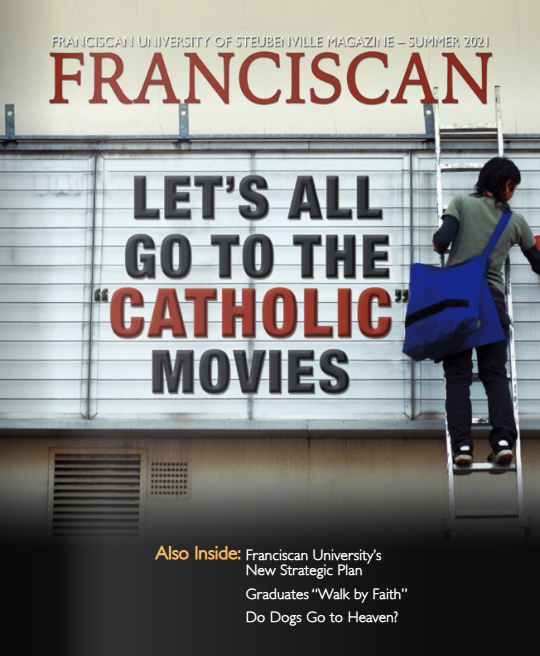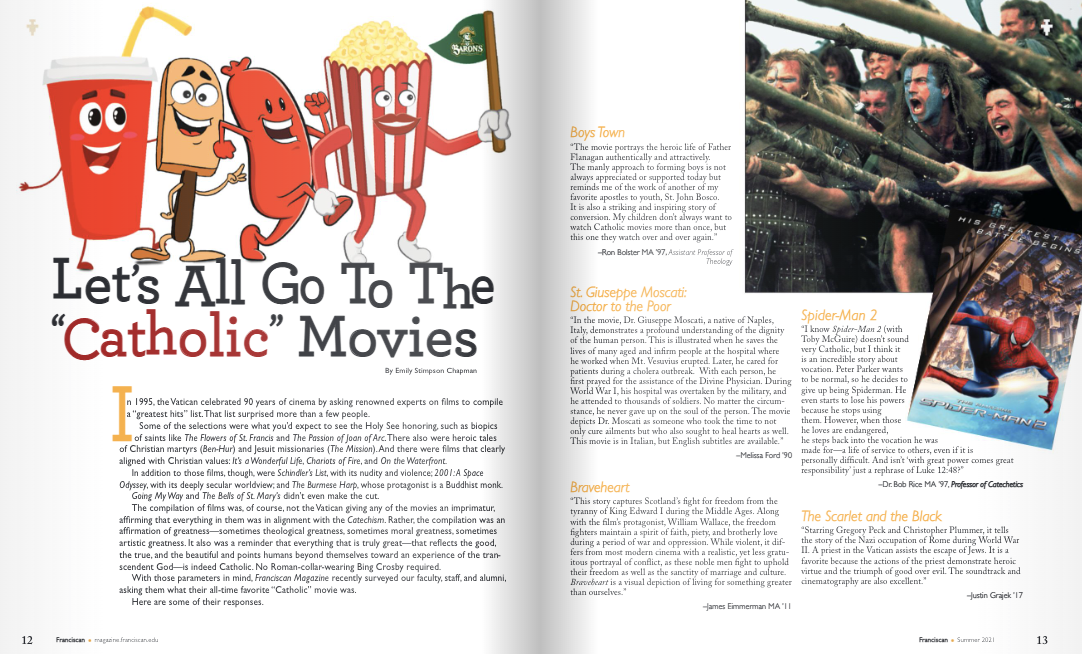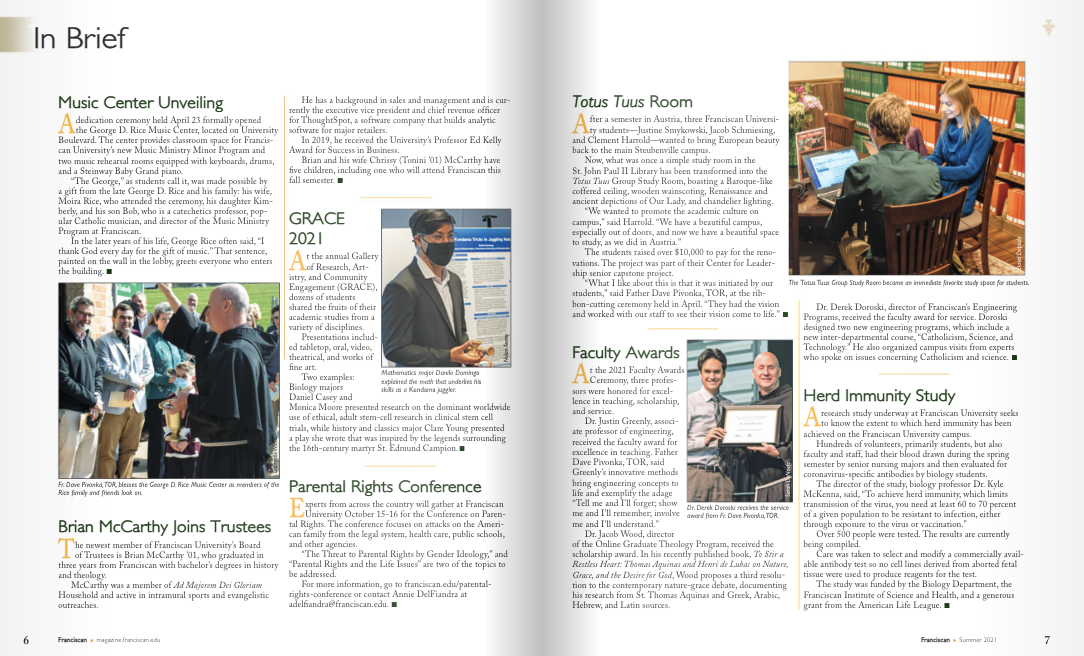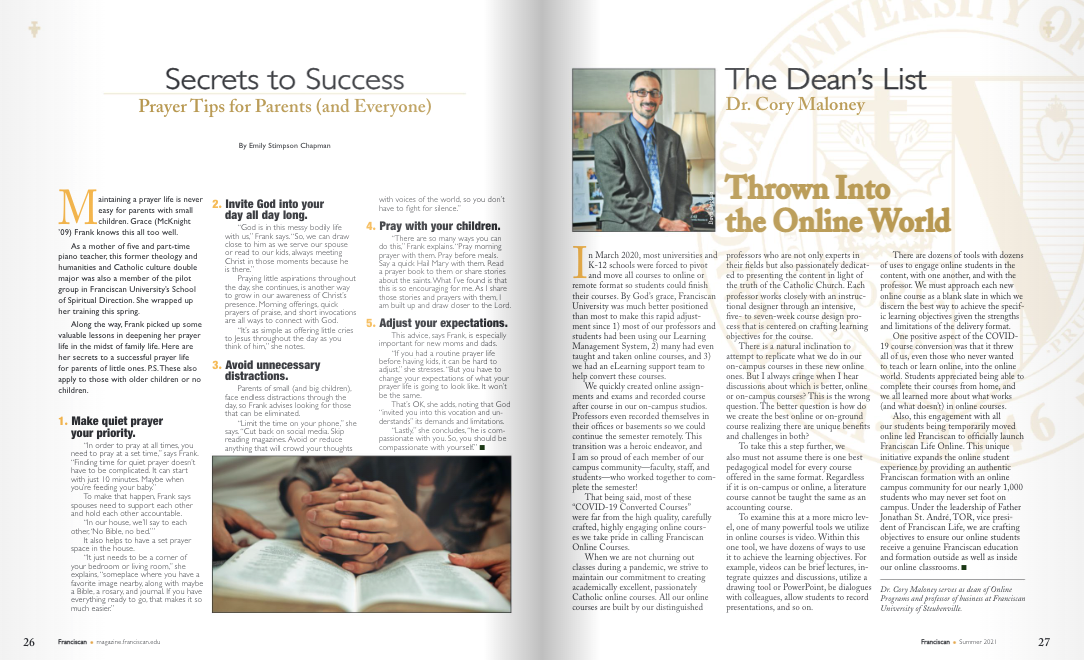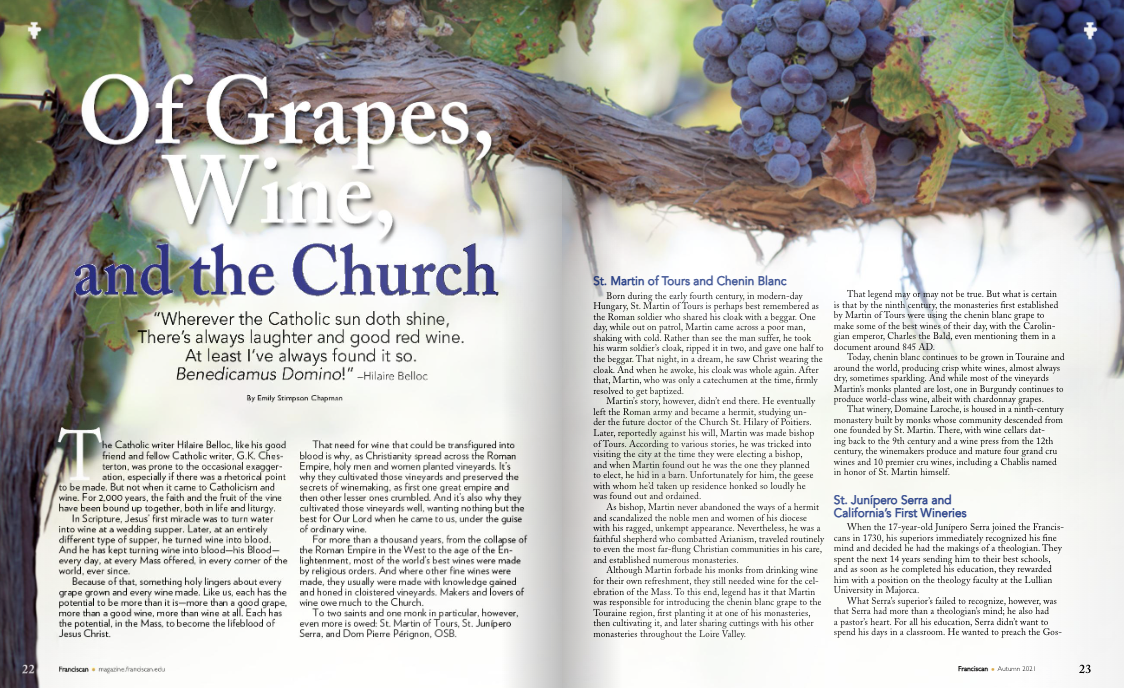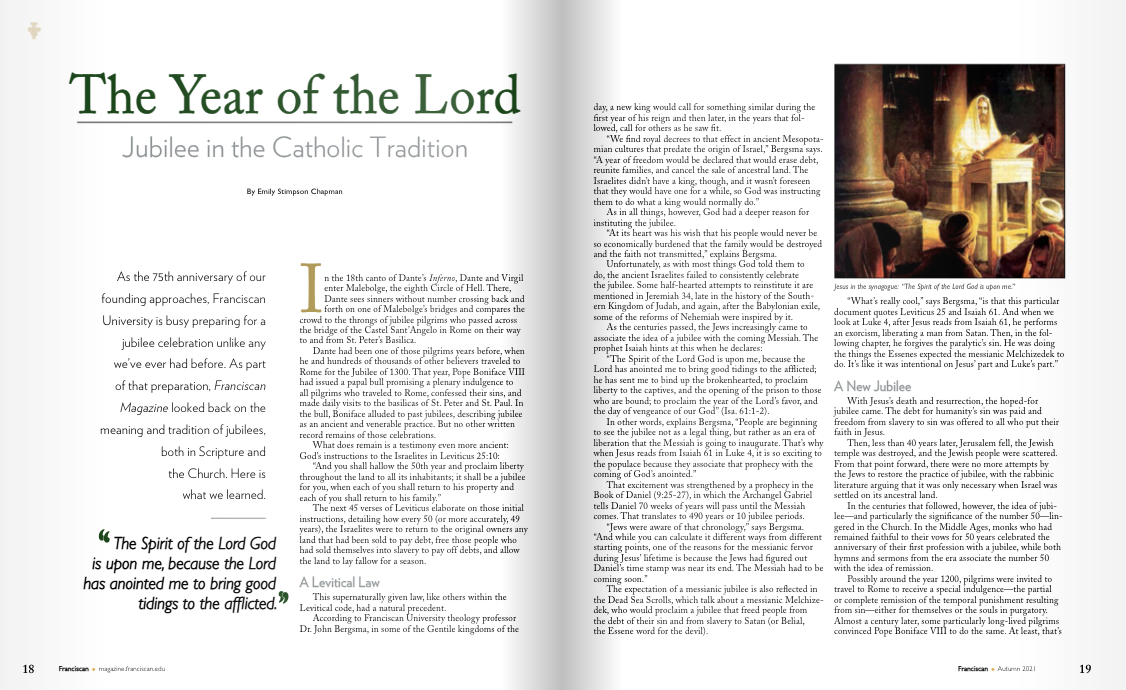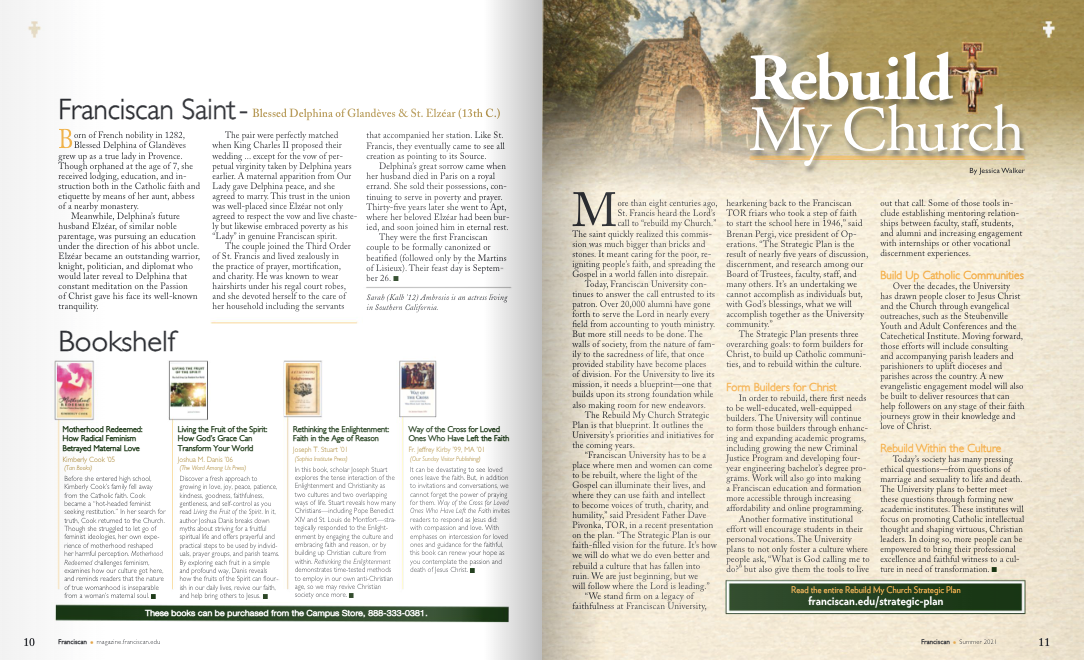In 1995, the Vatican celebrated 90 years of cinema by asking renowned experts on films to compile a “greatest hits” list. That list surprised more than a few people.
Some of the selections were what you’d expect to see the Holy See honoring, such as biopics of saints like The Flowers of St. Francis and The Passion of Joan of Arc. There also were heroic tales of Christian martyrs (Ben-Hur) and Jesuit missionaries (The Mission). And there were films that clearly aligned with Christian values: It’s a Wonderful Life, Chariots of Fire, and On the Waterfront.
In addition to those films, though, were Schindler’s List, with its nudity and violence; 2001: A Space Odyssey, with its deeply secular worldview; and The Burmese Harp, whose protagonist is a Buddhist monk. Going My Way and The Bells of St. Mary’s didn’t even make the cut.
The compilation of films was, of course, not the Vatican giving any of the movies an imprimatur, affirming that everything in them was in alignment with the Catechism. Rather, the compilation was an affirmation of greatness—sometimes theological greatness, sometimes moral greatness, sometimes artistic greatness.
It also was a reminder that everything that is truly great—that reflects the good, the true, and the beautiful and points humans beyond themselves toward an experience of the transcendent God—is indeed Catholic. No Roman-collar-wearing Bing Crosby required.
With those parameters in mind, Franciscan Magazine recently surveyed our faculty, staff, and alumni, asking them what their all-time favorite “Catholic” movie was.
Here are some of their responses.
Boys Town
“The movie portrays the heroic life of Father Flanagan authentically and attractively. The manly approach to forming boys is not always appreciated or supported today but reminds me of the work of another of my favorite apostles to youth, St. John Bosco.
It is also a striking and inspiring story of conversion. My children don’t always want to watch Catholic movies more than once, but this one they watch over and over again.”
—Ron Bolster MA ’97, Assistant Professor of Theology
St. Giuseppe Moscati: Doctor to the Poor
“In the movie, Dr. Giuseppe Moscati, a native of Naples, Italy, demonstrates a profound understanding of the dignity of the human person. This is illustrated when he saves the lives of many aged and infirm people at the hospital where he worked when Mt. Vesuvius erupted.
Later, he cared for patients during a cholera outbreak. With each person, he first prayed for the assistance of the Divine Physician. During World War I, his hospital was overtaken by the military, and he attended to thousands of soldiers.
No matter the circumstance, he never gave up on the soul of the person.
The movie depicts Dr. Moscati as someone who took the time to not only cure ailments but who also sought to heal hearts as well. This movie is in Italian, but English subtitles are available.”
—Melissa Ford ’90
Braveheart
“This story captures Scotland’s fight for freedom from the tyranny of King Edward I during the Middle Ages. Along with the film’s protagonist, William Wallace, the freedom fighters maintain a spirit of faith, piety, and brotherly love during a period of war and oppression.
While violent, it differs from most modern cinema with a realistic, yet less gratuitous portrayal of conflict, as these noble men fight to uphold their freedom as well as the sanctity of marriage and culture.
Braveheart is a visual depiction of living for something greater than ourselves.”
—James Eimmerman MA ’11
Spider-Man 2
“I know Spider-Man 2 (with Toby McGuire) doesn’t sound very Catholic, but I think it is an incredible story about vocation.
Peter Parker wants to be normal, so he decides to give up being Spiderman. He even starts to lose his powers because he stops using them. However, when those he loves are endangered, he steps back into the vocation he was made for—a life of service to others, even if it is personally difficult.
And isn’t ‘with great power comes great responsibility’ just a rephrase of Luke 12:48?”
—Dr. Bob Rice MA ’97, Professor of Catechetics
The Scarlet and the Black
“Starring Gregory Peck and Christopher Plummer, it tells the story of the Nazi occupation of Rome during World War II. A priest in the Vatican assists the escape of Jews.
It is a favorite because the actions of the priest demonstrate heroic virtue and the triumph of good over evil. The soundtrack and cinematography are also excellent.”
—Justin Grajek ’17
A Hidden Life
“Legendary director Terrence Malick is known for his sweeping cinematography and distilled dialogue, and here, Malick’s signature style seems perfectly paired with the silent discernment of conscientious objector Blessed Franz Jägerstätter.
From the verdant mountain pastures of Austria to a sterile Nazi prison, the audience witnesses the transformative power of that still, small voice of God. While Franz never makes any impassioned speeches, nor does he rally others to support his cause, he quietly but firmly decides he cannot in good conscience serve in the Nazi military even though many of his fellow Catholics, including his bishop, encourage him to support the Fatherland.
Even if it means losing his freedom, his family, and possibly even his life, he quietly continues to follow God’s will.”
—Hillary (Senour ’11) Mast
Chariots of Fire
“This is a real-life story with layers of meaning, yet sports enthusiasts and others can enjoy it, and the music is exhilarating and edifying.
The movie depicts the real human struggle of using our giftedness for God or for ourselves. It is a template of sorts that can be applied to our prayer life, vocations, work, sports, raising families, parish life, and other daily activities. When all that we do, within and without, is given for God, a natural happiness, fulfillment, peace, and joy follow.
When what we do is about ourselves, however, driven by competition or other passions, what follows is sadness, emptiness, anxiety, and a sense that something is missing.
There, of course, isn’t just something missing, but Someone missing, our Father, God, who is the reason to do all things well!”
—Olga Dankowski ’02
The Painted Veil
“This is a movie about marriage vows and redemption. A self-coerced marriage crumbles against the trials of a cholera epidemic in 1920s China, when infidelity and cruel coldness enter the relationship.
Time, service, and forgiveness heal the marriage before tragedy strikes. It’s not for children (with suggested sex, partial male rear nudity, violence, and graphic images of cholera symptoms), but it truly showcases what it means to forgive a spouse after serious sin and renew your commitment to each other.”
—Sarah (Kalb ’12) Ambrosio
The Sound of Music
“Loss and suffering so easily harden us and close us off, but beauty and kindness can bring us back if we let them.
Julie Andrews learning the names of the children and reminding them that the world is beautiful, fun, and worth singing about never gets old. And Christopher Plummer finally returning to his children through their song kills me every time.”
—Dr. Brandon Dahm, Assistant Professor of Philosophy
Of Gods and Men
“This film portrays the lives of a community of French Trappist monks living in Algeria peacefully with their Muslim neighbors. It draws the viewer into the beauty of their prayer life and the community in which they live. As conflict with radical Islamists ensues in their area, the monks must make a difficult decision to leave or stay and face martyrdom.
“One of the many reasons why I love this film is that it portrays religious life in such a positive and powerful way. The monks, although they have human flaws, live very generous lives and are committed to pursuing holiness.
When an elderly monk is asked for dating advice from a young woman, she asks him if he has ever been in love before. He replies, ‘Yes, I was in love once … but I encountered an even greater love. And I followed it.’”
—Elise Chabot ’12, MA ’21
The Reluctant Saint
“Joseph of Cupertino was a nobody. He was mentally slow and not very intelligent according to worldly views. However, the beauty of his soul shone to heaven.
This movie teaches us not to be quick to judge. His song on earth may have been unimpressive, but the beauty of his soul was a symphony of perfection when it reached God in heaven!”
—Linda Dorisio, Academic Advising
A Man for All Seasons, Life Is Beautiful, Babette’s Feast
“Here are three amazing movies, whose absence from my life would prove, perhaps not incapacitating, but certainly impoverishing.
And while each is distinctive and special in its own way, what unites the three is the stunning witness they provide to what an old professor of mine memorably called ‘the poetry of the transcendent.’ It is as if each were a cunning trap designed to rivet the attention to a world richer and deeper than the banal and workaday one in which we find ourselves stuck.”
—Dr. Regis Martin, Professor of Theology
Groundhog Day
“Finding himself trapped in small-town Punxsutawney, PA, reliving February 2, day after day after day, the egotistical weatherman Phil Connors (Bill Murray) struggles and fails to escape his meaningless life. In despair, he turns to his coworker Rita (Andie MacDowell), who confronts his self-centeredness directly.
Phil turns his attention to self-improvement rather than self-indulgence, which leads him to help others rather than focusing on himself. Phil demonstrates how we can find joy, fulfillment, and meaning in life, while Rita models self-respect, integrity, and true love that wills the best for another.”
—Dr. Amy Roberts, Assistant Professor of Theology
The Mission
“Written by Robert Bolt (A Man for All Seasons), The Mission is a captivating story of evangelization, redemption, and the ultimate test of faith.
Set in 18th-century South America, this is the tale of two Catholic countries vying for colonial power in Paraguay and the Jesuit missionaries who valiantly strive to protect the native converts from capture and slavery.
Award-winning cinematography and a compelling musical score cap this cinematic adventure. It’s just the kind of story that Pope Pius XII would call an ‘ideal film.’”
—Ellen Campbell MA ’20
Other Classic “Catholic” Favorites
- Fiddler on the Roof
- Going My Way
- The Bells of St. Mary’s
- I Confess
- On the Waterfront
- The Passion of the Christ
- Ikiru
- The Burmese Harp
- The Bicycle Thieves
- Hacksaw Ridge
- Schindler’s List
- Bella
Cinderella
“Contrary to public opinion, my favorite movie is not Spaceballs. It is, rather, the 2015 version of Cinderella. Oh my, not a single mistake was made.
The screenplay writer seems to be a typical Hollywood hack. But with the right material and direction, he wrote something I thought was deeply true and magnificently beautiful. The direction, acting, settings were stellar.”
—Dr. James Harold, Professor of Philosophy
Cinderella Man
“James Braddock is a boxer who hits rock bottom, as he has been out of the business due to an injury and has to support his family during the Great Depression. This Catholic father sacrifices his own ego and pride so his family can stay together. T
he way the film portrays the marriage between the Braddocks is classy and yet very authentic. Marital complementarity is seen as being centered around faith, prayer, and parish life. A mother and father who are willing to sacrifice everything in a very gritty, incarnational way and in the end are blessed beyond expectation.
This film is about the extraordinary grace that comes through redemptive suffering. It first pulls one man up to fight and then raises the entire family up in glory.”
—Gary Sullivan MA ’07
The Lord of the Rings Trilogy
“The book trilogy is great, and the movie added a whole other visual dimension to it. I choose not to be led into a debate as to the movie versus book medium. I want them both!”
—Dr. Eugene Gan, Professor of Communication Arts
The Count of Monte Cristo
“Alexandre Dumas’ story of revenge and hidden treasure may not usually come up as one of the great Catholic movies, but I list it among my top three, as well as being the only movie I like more than the book.
“Accused of a crime he didn’t commit by jealous friends, the protagonist is tortured and forgotten by those he loves. He meets Abbé who teaches him not only the lessons of the world but also keeps imposing on him the lessons of the soul.
After the count’s escape from prison, he continues with his own willful journey into revenge, but then love and forgiveness start to weaken his heart, which had become hardened against the saying he carved into his jail wall: ‘God Will Grant Me Justice.’ Psalm-like, no?
Surprising, with deep Catholic themes of forgiveness, perseverance in trials, faith in adversity, and free will, it makes an adventure movie night into an intellectual one as well.”
—Christina Pankus ’07
A Room With A View
“This movie is about the transformative power of beauty, told through the love story of Lucy Honeychurch and George Emerson.
Lucy encounters George on holiday in Florence; while Lucy and her chaperone have hotel rooms without views, George and his father have views. George’s father insists that they switch rooms; he and George do not need a view because—and here he pokes himself with a fork in the heart—“here is where the birds sing, here is where the sky is blue.”
As the love story unfolds, it becomes clear that Lucy’s love of beauty remains repressed, while George is oppressed by his quest for beauty. Eventually, Lucy releases her passion for the transcendent, and George finds his answer to ‘the eternal why’ in Lucy.
This is at once a deep philosophical film, while still being thoroughly enjoyable and funny. Every character is lovable, every scene appropriate. NB: There is one brief, comic scene of unsexual nudity involving people swimming in a pond.”
—Dr. Sarah Wear, Professor of Classics
Padre Pio
“Released in 2000 and directed by Carlo Carlei, this biopic about the upbringing, ordination, mysticism, trials and saintly death of Francesco Forgione, left a lasting impression on me and, most notably, my lapsed-Catholic father.
The music is wonderfully emotive; the acting, production, and costumes all understated yet effective. The film makes approachable and almost tangible a figure who, by all modern estimations, seems larger than life, hard to believe, easy to doubt … and divulges the mundane proceedings by which he achieved a sanctity that all of us can attain.
I was also touched by the humanity of Pio: his brushes with potentially romantic love; his night tremors and worldly humiliations; his experiences with illness and death in the family. I learned and laughed more than I ever expected, and highly recommend Padre Pio without reservation.”
—Bryan Walker, Lecturer in Spanish
The Exorcist
“This movie reminds us that evil does exist, and that it can be defeated. Plus, when’s the last time you saw anyone turn his or her head 360 degrees?”
—Zach Yonk ’10
Risen
“It may not be Catholic, but it is one of my favorites. It portrays the Resurrection as an objective, tangible event when Joseph Fiennes witnesses the living Christ with the Apostles.
It also shows the consequences for the Roman guarding Jesus’ tomb and the conversion of Fiennes’ character as a result of what he witnessed from Jesus and the Apostles.”
—Noel Whitehurst ’92
Becket
“Amazing actors, fantastic sets, and my personal favorite scene in cinematic history with the excommunication of Roger of York. It’s such a powerful movie!”
—Michael O’Connor ’19
Karol: A Man Who Became Pope and Karol: The Pope, The Man
“Our family is devoted to St. John Paul II, and we watch this beautiful and powerful two-part movie depiction of his life at least twice a year. It has helped us grow to love him and the Lord even more. His witness is inspiring!”
—Gina Deighan ’15 MA ’20
Clare and Francis
“It is very historically accurate without a lot of liberties taken in portraying the actual events. Very good acting by all the actors. And it is very moving and inspiring.”
—Andrew D. Gray, OFS ’78
Filmmaking as Evangelization
How do you go from working as a youth minister to producing major motion pictures starring big name actors such as Jim Caviezel? And can the latter work serve the Church as much as the former?
Recently, Franciscan Magazine put those questions and more to Eric Groth MA ’93, CEO of ODB Films and executive producer of the 2018 film Paul: Apostle of Christ. Here is what we learned.
Franciscan Magazine: Where did you get your passion for using the medium of film to proclaim the Gospel?
Eric Groth: I grew up in a parish that was really dynamic and had a youth minister who was very innovative with technology—his stuff was as multimedia as you could get in the 1980s.
When I went into youth ministry myself, that inspired me to look for ways we could present the Gospel in creative ways to young Catholics.
After I graduated from Franciscan, I worked at a Catholic high school in Rockford, Illinois, as a teacher and coach. I would ask students questions on camera and made little films to communicate the Gospel message.
I then went to work with Cultivation Ministries for five years. We were doing rallies for teens and creating our own film content that we would use in the day-long programs.
At the end, we would have youth ministers coming up to us, asking where we got the films. So, we started sharing those films with youth ministers.
When I left that ministry, I started a film production company, Outside Da Box (now ODB Films), as a means of creating video resources for youth workers.
We launched in 2005 and produced 250 films for teens in 10 years. Those were used in retreats, youth ministry work, and rallies. The big series we produced was the Video Catechism. Bob Rice MA ’97 was the writer for half the films in that series.
FM: How did making films for youth lead to your work producing Paul?
EG: Over the course of those years with Outside Da Box, we were asked all the time if we had films on the lives of the saints.
We decided to explore what that could look like, and that led us to produce Full of Grace in 2015, our first feature film. That became a calling card to produce the Paul film.
Sony Pictures hired us to make the film and market it in the Catholic space. It’s been amazing to see how God kept opening doors and opportunities for us.
FM: Why do you think films can be such a powerful tool for evangelization?
EG: I think we’re being called to evangelize and minister to the young Church and do it with excellence.
One of the Church documents that was a rallying cry to me was Pope St. John Paul II’s “The Rapid Development.” There’s a line in there that I appreciated: “Everything possible must be done so that the Gospel might permeate society.”
I see film as tool or a conduit for sharing the good, the beautiful, and the true. I think the digital space, in terms of social media, has become such a tool of the enemy.
But beauty and art and paintings are still things at which we love to stare. As disciples who know technology, we’re called to visio divina, to create something beautiful in the digital space for people to contemplate, which can lead them to God.
FM: What do you think makes for a great Catholic movie?
EG: Story is king. It doesn’t matter if your budget is $10 million or $1 million or $250 million, if the story is good, the movie will be good.
I also think that story should show the transformation of a character’s heart. There should be metanoia, where there is some kind of conversion and redemption. It doesn’t need to have a Catholic tag on it or Catholic actors or even Catholic producers to do that.
Transformation, conversion, heroism, redemption—those are all key. They all reflect Catholic values even if a film isn’t explicitly Catholic or Christian.
Our local theatre does $5 movies every Tuesday. When they were younger, my kids and I would go. What I was always looking for was to be inspired.
When I walk out of that theatre, I want to have been inspired to be the best I can be and do what God has called me to do. If that happens, then I consider that movie to be a great Catholic film, regardless whether it’s explicitly Catholic or made by Catholics.
FM: What do you think are a couple of the greatest Catholic movies of all time?
EG: The Mission and Hacksaw Ridge are right up there at the top of my list. They are films that show the power of beauty, goodness, and truth.
But The Mission is really something special. It’s the most beautiful depiction of forgiveness and conversion I’ve ever seen in a movie. It’s so raw and real.
FM: What’s next for you?
EG: I’m working on two feature films. One on Dr. Jerome Lejeune, who was just named venerable, and a feature film on St. Damien of Molokai. We’re in the process of developing that story right now.
I’m also working on a long documentary about a radio personality in Chicago who found conversion through Mary. It’s called Broken Mary.
There’s also a miniseries on St. Patrick we’re developing. And, lastly, we’re doing a short form series for youth ministry that’s a little more catechetical in nature.



